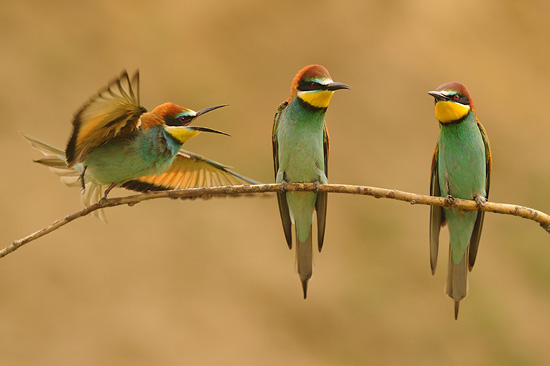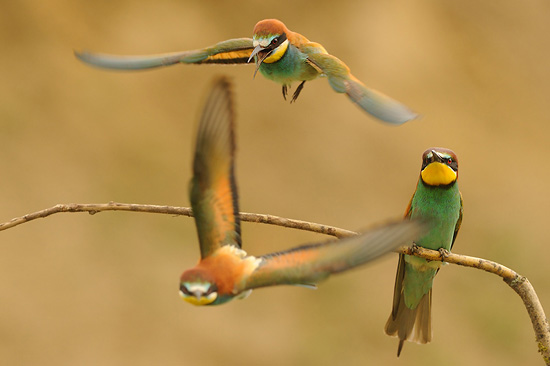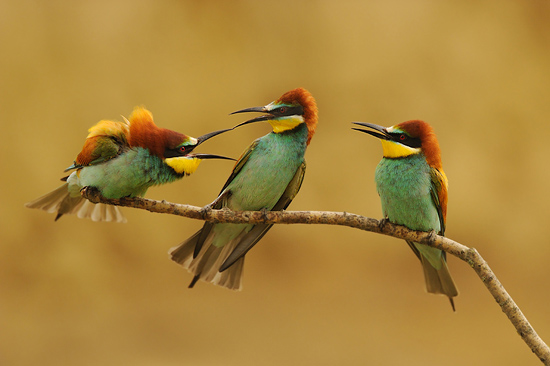On the first of june 2013, I could observe during an entire morning the typical behaviour of European Bee-eaters at a colony in the Hungarian puszta. As soon as it started to warm up and the insects became active, the birds flew out of their nests to go foraging. Others were still carving out their nests in the steep loamy sandbank.
Colony breeding
Bee-eaters are colony breeders with sophisticated social relationships. European Bee-eaters nest in small colonies of up to eight pairs. Hungary is known to hold some unusually large colonies of hundreds of nests. Their favourite breeding sites are cliffs and steep banks of dry loamy clay, firm sand or soft sandstone. This colony in Hortobagy Nat had normal proportions and consisted of about ten breeding pairs.
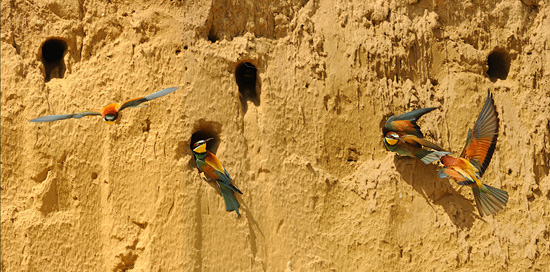
Pairs for Life
The European Bee-eater seems to pair for life, but 20 % of the pairs have a helper when they raise their young. Apparently the helper is nearly always a male.
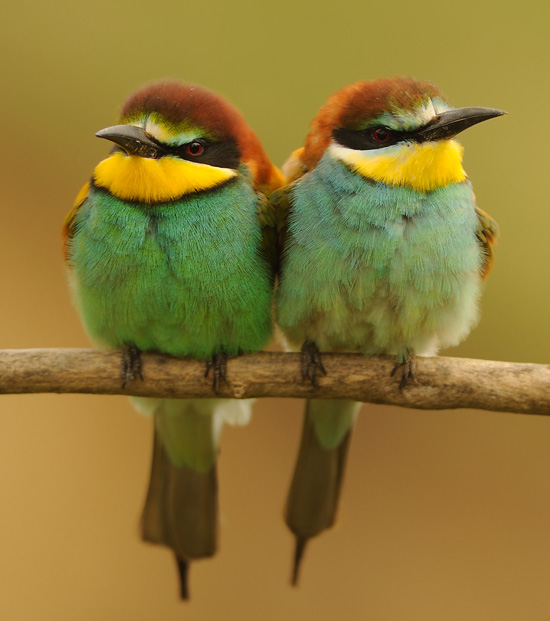
Greeting Ceremony
Each time a Bee-eater meets his partner on a perch, a short kind of greeting ceremony takes place: both birds perch then upright, call excitedly, and fan and vibrate their tail. The image underneath shows this typical behaviour.
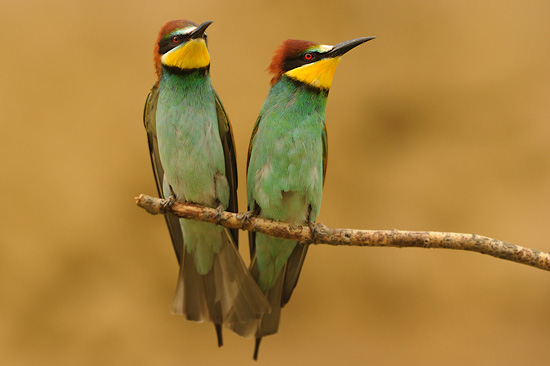
Mating Behaviour
A very brief courtship precedes the mating. The male first offers an insect to the female, then he puts his wing tenderly around his mate. This is soon followed by the mating. Here are some images of the mating sequence.
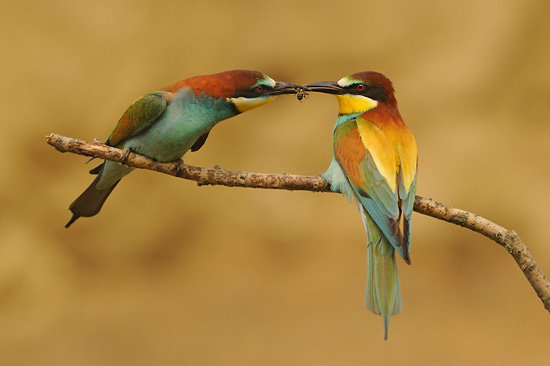
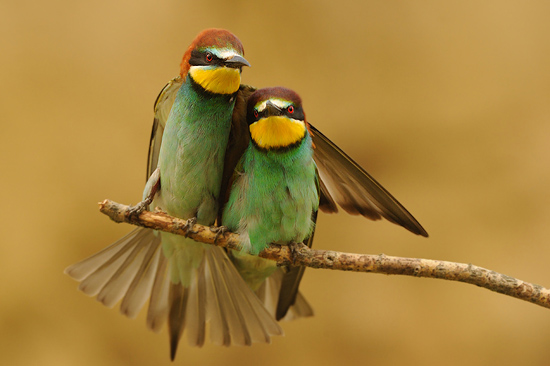
Here the female in a receptive position.
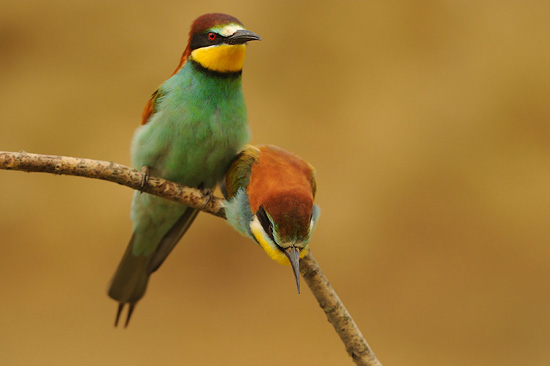
This is finally followed by the mating.
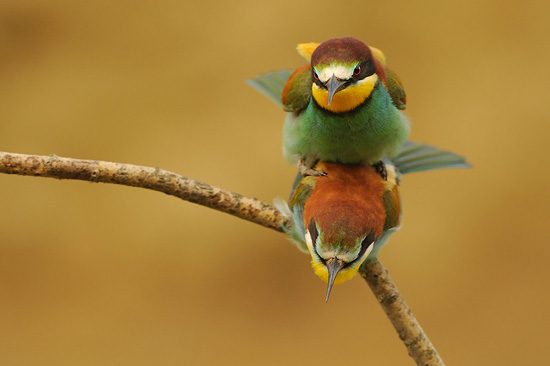

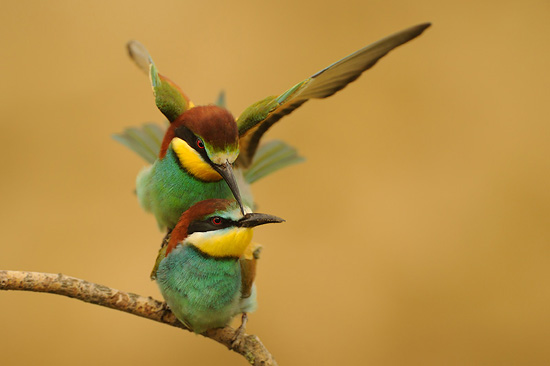
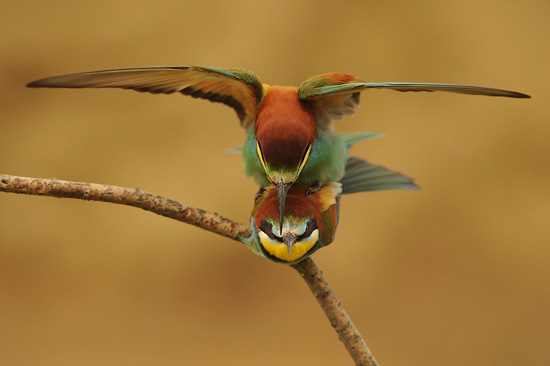
Interactions between pairs
All the above mentioned social behaviour is related to the pair bonding. But during about five minutes, I witnessed a kind of spectacle in which many pairs were involved. It seemed very similar to the greeting ceremony of a pair, but then with tens of pairs involved on all the perches in the close vicinity of the colony. It started with the excitedly calling of several flying pairs. A few moments later several pairs landed very close to each other on the perches. The birds then started to stretch out and perch upright, while calling vigorously. Very often they chased away a bird on a perch or quarrelled with their neighbour on the perch.
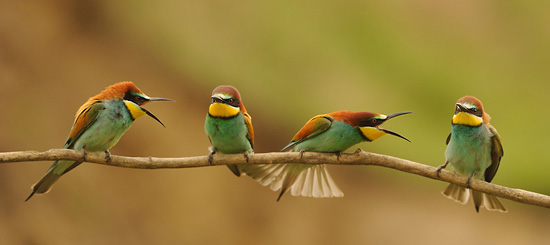
Sometimes it looked like a simultaneous choreography of two pairs, but more often there seemed to be a small dispute between some of the birds. The behaviour lasted for a few minutes and then stopped as sudden and unexpectedly as it had started. The exact meaning of this brief and intense spectacle remains unknown to me, but I guess it' s part of the complex social behaviour of these colony-breeders.
